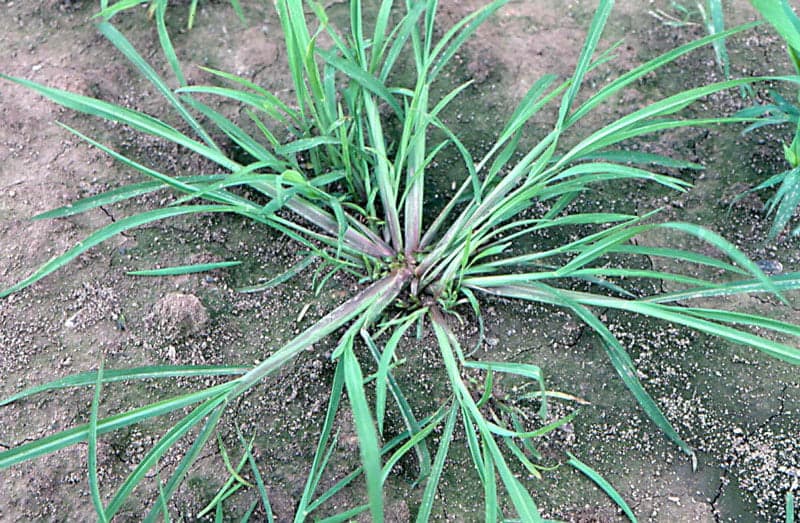Barnyard grass is a common weed found in gardens, lawns, and agricultural lands. It grows rapidly and can quickly take over an area if left unchecked. This invasive grass is not only unsightly, but it can also compete with desirable plants for nutrients, water, and sunlight.
In this article, we will provide a comprehensive guide on how to kill barnyard grass effectively, while also preventing its regrowth.
Quick Links
Understanding Barnyard Grass

Before attempting to eradicate barnyard grass, it’s essential to recognize its characteristics. Barnyard grass is an annual weed that reproduces through seeds. It typically grows in clusters and can reach heights of up to 5 feet tall. The leaves are flat, smooth, and can have a reddish-purple tint at their base. Barnyard grass thrives in moist, fertile soil and loves sunlight, making landscaped and cultivated areas prime targets for infestation.
Preventative Measures
One of the best ways to limit the growth of barnyard grass is to take preventative measures. Here are some steps you can take to ensure that your garden, lawn, or agricultural land remains weed-free:
- Proper mowing: Mow your lawn regularly and maintain an appropriate height that promotes the growth of desired grasses while inhibiting weeds. A mowing height of 3-4 inches is typically recommended.
- Healthy soil: Maintain a well-aerated, nutrient-rich soil that encourages the growth of desired plants and discourages weed growth. Adding organic matter and ensuring proper drainage can help improve soil health.
- Mulching: Apply a layer of mulch around your plants and in garden beds to discourage weed germination and growth. Mulch can be made of organic materials like wood chips, straw, or grass clippings or inorganic materials such as gravel or landscape fabric.
- Plant competition: Plant desirable species close together to crowd out weeds and reduce available space for barnyard grass to grow. Planting ground covers or companion plants can also help prevent weed growth.
- Regular inspection: Regularly inspect your property for signs of barnyard grass growth and take action early to prevent further infestation. Early detection and removal can help prevent the spread of seeds and make control more manageable.
Chemical Control Methods
If preventative measures are not enough to keep barnyard grass at bay, you may need to turn to chemical control methods. Be sure to follow all label instructions and safety precautions when using herbicides.
- Pre-emergent herbicides: These herbicides help prevent the germination of barnyard grass seeds. Apply pre-emergent herbicides in early spring before seeds have a chance to sprout. Examples of pre-emergent herbicides effective against barnyard grass include prodiamine and pendimethalin.
- Post-emergent herbicides: These herbicides are designed to kill established barnyard grass plants. Apply post-emergent herbicides when the weed is actively growing and before it sets seed. Examples of post-emergent herbicides effective against barnyard grass include glyphosate, quinclorac, and fenoxaprop-ethyl.
Mechanical Control Methods
In addition to chemical control, you can also utilize mechanical methods to kill barnyard grass. These methods are especially useful in smaller or more environmentally-sensitive areas:
- Hand-pulling: For small infestations, carefully pull-out barnyard grass by the roots to prevent regrowth. Ensure to remove the entire root system to prevent re infestation. Dispose of the pulled weeds properly to avoid spreading seeds.
- Hoeing: Use a hoe to sever the roots of barnyard grass plants just below the soil surface. This method is most effective when the soil is dry and when the plants are young and have not yet produced seeds.
- Cultivation: For larger infested areas, cultivate the soil using a rototiller or plow to uproot and kill the barnyard grass plants. This method is best used in agricultural settings.
- Solarization: Use clear plastic sheeting to cover the infested area during the warm summer months. This will trap the sun’s heat, raising the soil temperature and killing the barnyard grass seeds and root systems. Leave the plastic in place for 4to 6 weeks for optimal effectiveness.
Biological Control Methods
Some animals and insects can help control barnyard grass populations by feeding on the plants or their seeds. Encouraging these natural predators can aid in keeping barnyard grass under control:
- Insect predators: Some insects, such as grasshoppers, crickets, and beetles, can feed on barnyard grass seeds and reduce the weed’s ability to spread. Encourage insect predators by providing habitats, like rock piles and organic debris, where they can live and breed.
- Grazing animals: Grazing animals like sheep, goats, and cows can help control barnyard grass by feeding on the plants. Consider incorporating them into your land management strategy for optimal weed control.
- Weed-eating birds: Birds like geese, ducks, and certain wild birds can consume barnyard grass seeds and plants. Attract these birds to your property by providing water sources, nesting areas, and safe habitats.
- Beneficial microorganisms: Introducing beneficial microorganisms, such as mycorrhizal fungi, can help promote the growth of desired plants while inhibiting the growth of barnyard grass. These microorganisms form a symbiotic relationship with plant roots, helping them access nutrients and moisture.
Bottom Line
By combining these preventative, chemical, mechanical, and biological control methods, you can effectively kill and manage barnyard grass on your property. Remember to monitor the area regularly for signs of new infestations and take action promptly to prevent the spread of this invasive weed. With diligence and proper management techniques, you can maintain a healthy, weed-free landscape that supports the growth of desired plants and enhances the beauty of your outdoor space.

